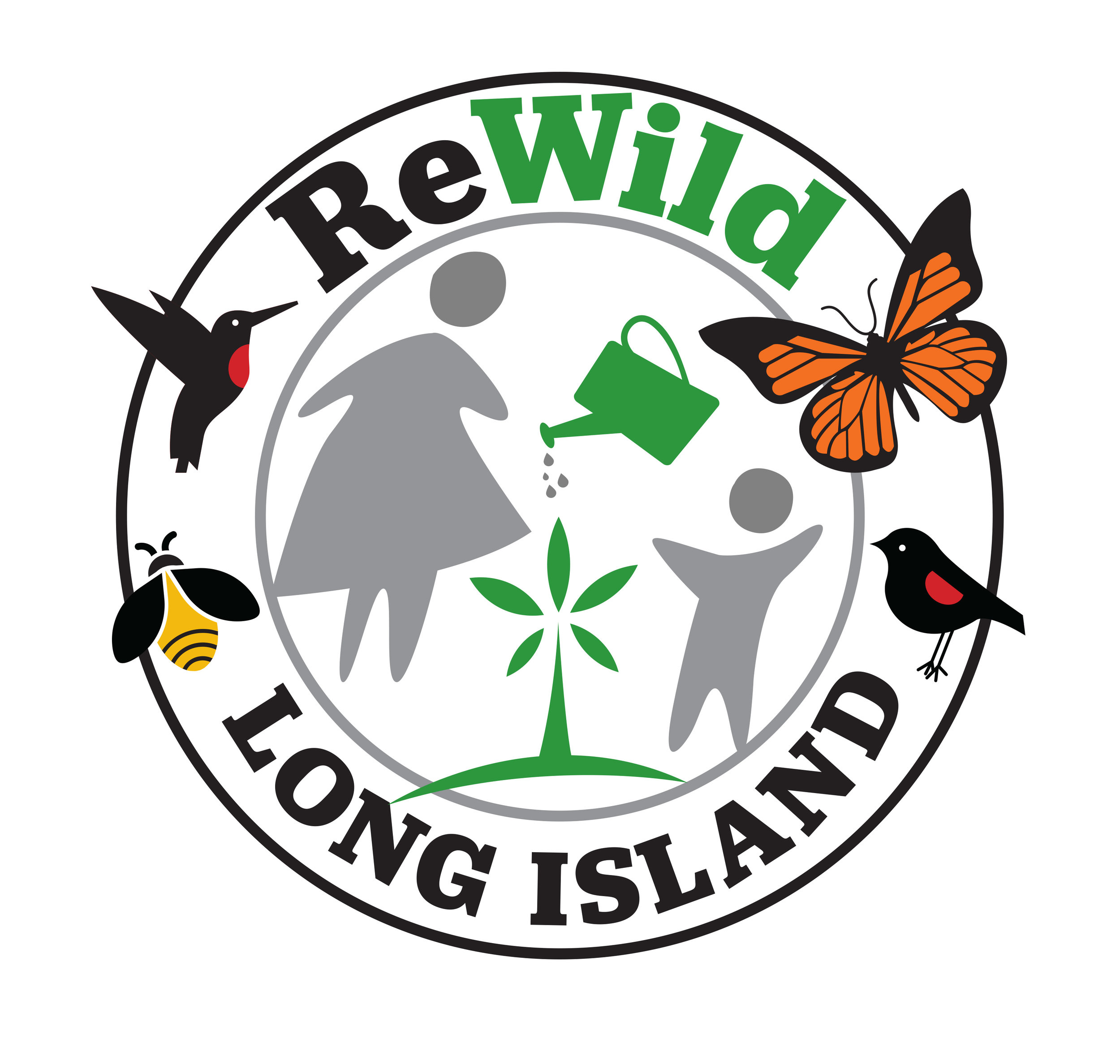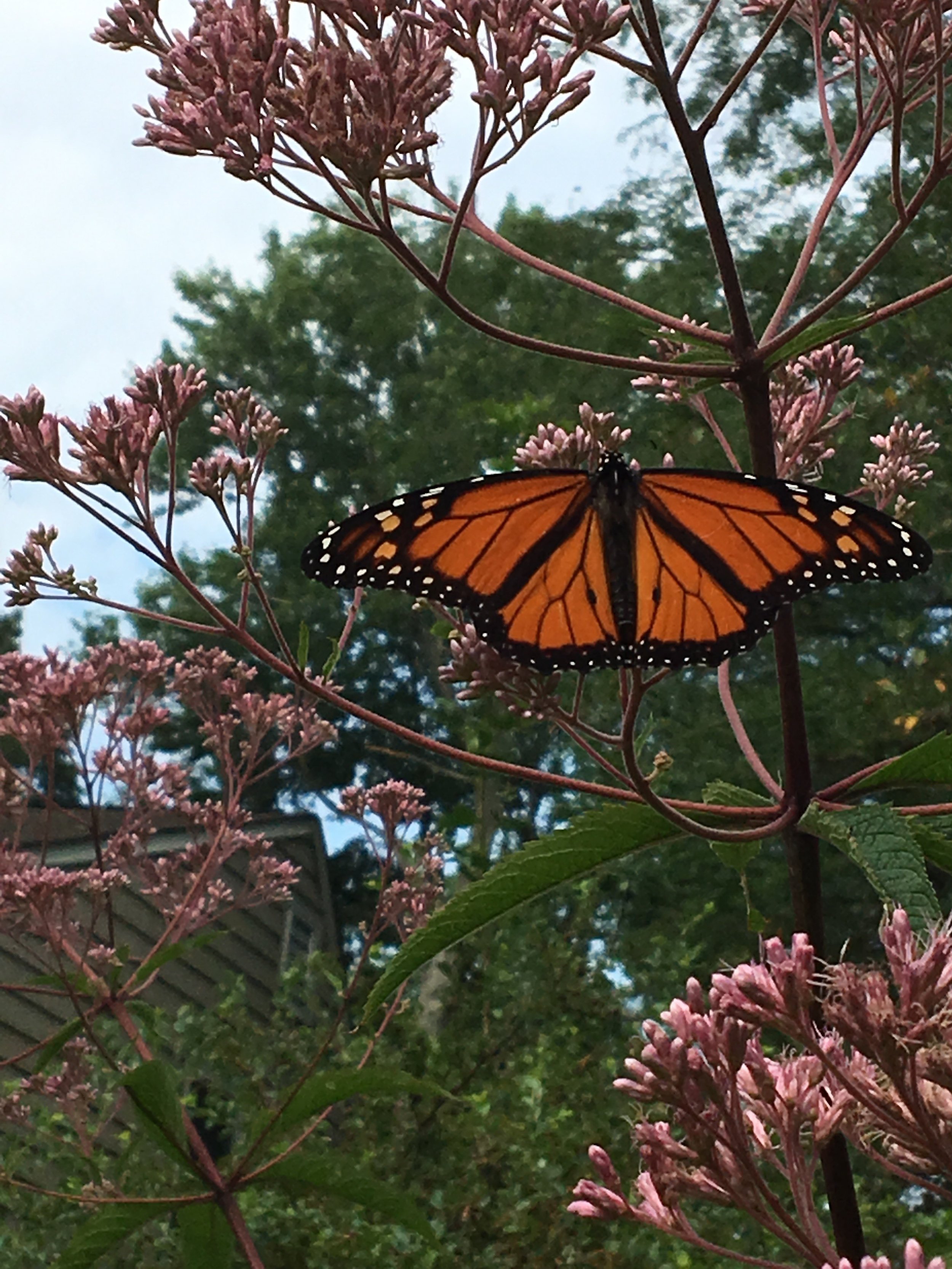Peggy's Project : 10 Years and Not Done
Peggy Maslow is a devoted conservationist who volunteers for a wide variety of causes cutting across her beloved birds, native plants, science and eco-conservation. Her front yard is a beautiful testament to native plants, insects and birds. As current President of North Shore Audubon Society, Peggy certifies yards as bird-friendly habitats. This involves a visit to your yard to check for native plants, and other criteria. If you pass you get a sign. In the process Peggy helps you design your yard and recommends native plants if you need this advice. Because North Shore Audubon Society Is considered a wholesaler, Peggy can order and deliver plants from wholesale garden centers. She has been doing this service for three years and certified over 30 properties.
I haven’t finished converting my yard though I have been working at it for at least 10 years. In 1975, when I bought my house on a quarter acre in Port Washington, I did not know much about the difference between native and non-native plants and how native plans help birds and other wildlife survive. I didn’t know that native pants often need less water.
I read a review over 10 years ago of Douglas Tallamy’s book, Bringing Nature Home. I took the book out of the library and then went to Suffolk County talk by Douglas Tallamy about his book and bought it there and had him sign it. At a Carolina Bird Club meeting I was able to get a CD of his talk to the Cape Fear Audubon Society and in fact I now have several copies thanks to Tanya Cruesner who made them. So if anyone wants to view this I have copies to lend.
Very motivated to convert my yard to a bird-friend habitat which also means pollinator-friendly, I removed large bushes, burning bush and privet and then I planted a raspberry bush garden. I still have some burning bushes that are a border between my neighbor and myself. I also left up many other non-native bushes I planted but slowly now I will replace a few of them in the hedge bordering my neighbor’s yard.
Perennials that have done well in my yard are Joe Pye weed, cup flower, black-eyed susan, cone flower, swamp milk weed, butterfly weed, hibiscus, native Columbine, blue mist flower, false indig, yucca and a bush, cleuthra and a vine, native honey suckle. I try to have a group growing for every season. Last year I made room by removing all my day lillies and this year I removed most non-native iris’s. I have removed hald my hostas. I am constantly removing invasive non-native vines but leaving Virginia Creeper. I have had trouble with cardinal flower but I keep trying new places for it because hummingbirds love it.
From the Connecticut Audubon Society I found a brochure entitled, “10 Native Plants.” I dug up another large non-native bush and started a native perennial garden in its place using this brochure as a guide. Every year I keep adding perennials. I learned from a landscape architect to plant similar plants together in large groups. It looks better. I planted native viburnums, a flowering dogwood and serviceberry tree mentioned in this brochure, not all at once but gradually, a few every year, digging up some more lawn.
A few years ago I went with a friend to a walk at the New York Botanical Garden’s Native Plant garden led by the designer and head of it. I have since been back during different seasons to see what plants I like. In fact, at the store there I bought a set of 16 small native plants for shade which is how I discovered creeping phlox or phlox stolinifera, one of my favorite plants now for spring and for a ground cover. I have been removing non-native vinca and replacing it with creeping phlox. I also noticed crested dwarf iris at NYBG which I now have in my yard.
I learned from Douglas Tallamy’s book and talk that some native plants are more helpful than others and so I try to plant those. I have four small oak trees now in my yard, started by squirrels which I encourage to grow because oaks are the best plants for wildlife. I also encourage wild cherry trees to grow in my yard, the second best native plant. I have large stands of aster and goldenrod which are considered the best perennials. It is important to realize that some native plants are more helpful than others. You can use Douglas Tallamy’s book or his web site bringnaturehome.net for a list of the best native plants.


